NCERT Solutions Class 11 Biology Chapter 14 - Respiration in Plants
Q1: Differentiate between
(a) Respiration and Combustion
(b) Glycolysis and Krebs’ cycle
(c) Aerobic respiration and Fermentation
Ans:
(a) Respiration and combustion (b) Glycolysis and Krebs cycle
(b) Glycolysis and Krebs cycle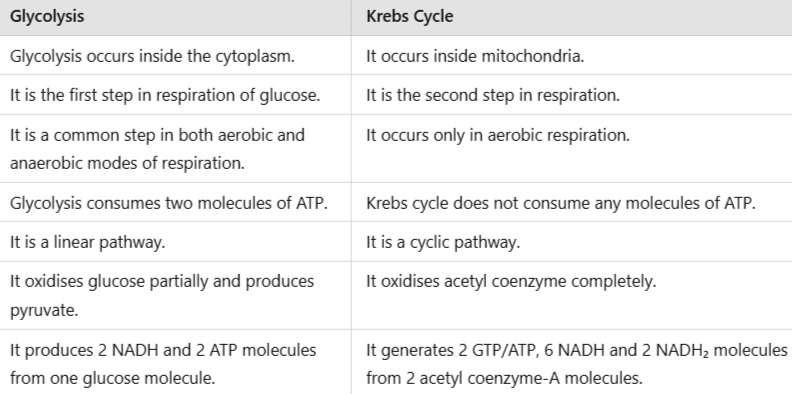 (c) Aerobic respiration and fermentation
(c) Aerobic respiration and fermentation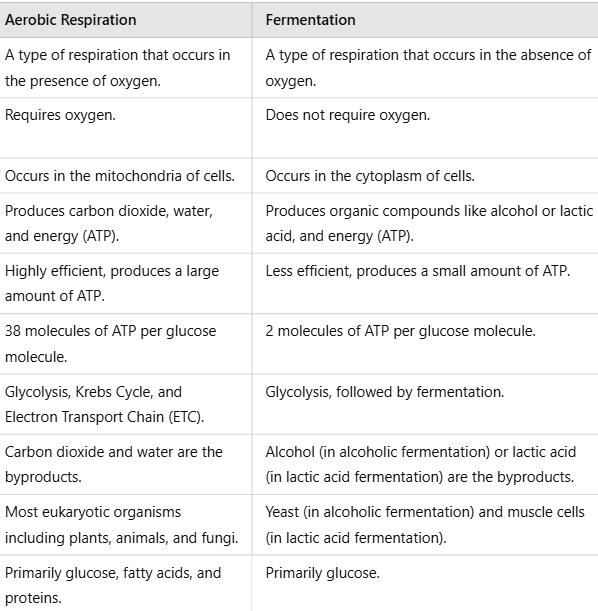
Q2: What are respiratory substrates? Name the most common respiratory substrate.
Ans: The compounds oxidised during the process of respiration are called respiratory substrates. Carbohydrates, especially glucose, act as respiratory substrates. Fats, proteins, and organic acids also act as respiratory substrates.
Q3: Give the schematic representation of glycolysis?
Ans:
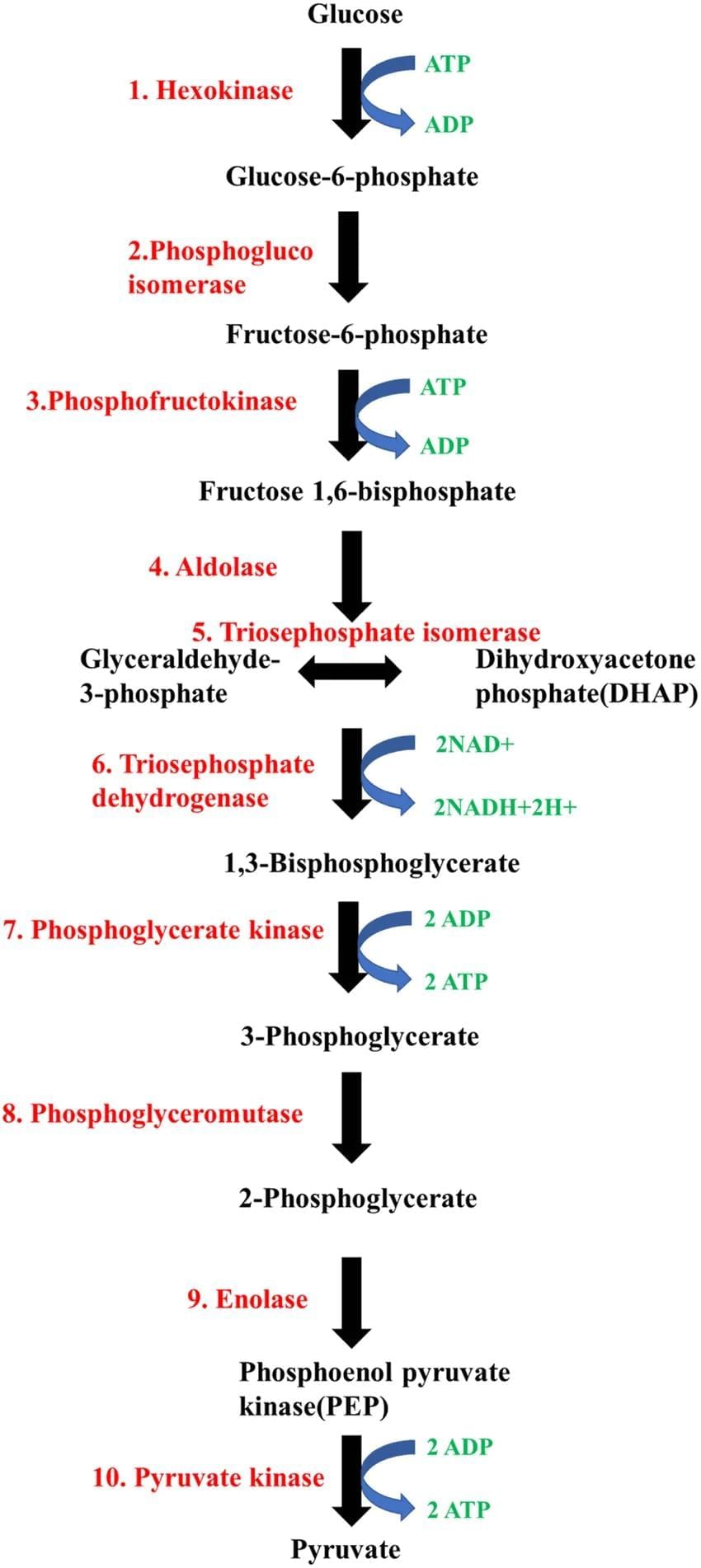
Q4: What are the main steps in aerobic respiration? Where does it take place?
Ans: The main steps in aerobic respiration are as follows:
- Glycolysis: Occurs in the cytoplasm(cytosol), where glucose is broken down to pyruvic acid.
- Oxidative decarboxylation of pyruvic acid to acetyl coenzyme A: Takes place inside the mitochondrial matrix.
- TCA, or the Krebs cycle, takes place in the Mitochondrial matrix, where pyruvic acid is oxidised to transform the energy contained in these molecules into ATP.
- The electron transport chain, which occurs in the mitochondrial membrane, involves the ATP synthase complex.
Q5: Give the schematic representation of an overall view of Krebs cycle.
Ans: 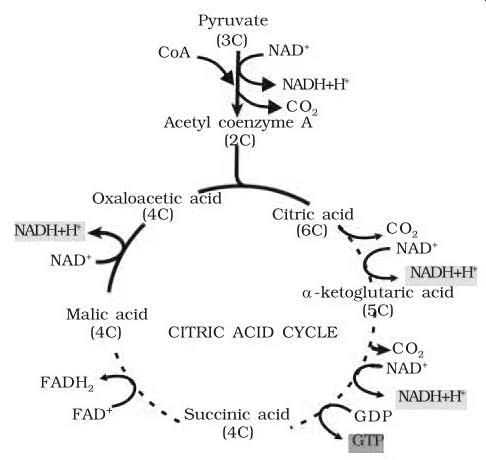 Q6: Explain ETS.
Q6: Explain ETS.
Ans: ETS, or the electron transport system, is found in the inner mitochondrial membrane. It plays a crucial role in releasing and using the energy stored in NADH + H+ and FADH2. The process works as follows:
- NADH + H+ is produced during glycolysis and the citric acid cycle. It is oxidised by NADH dehydrogenase (complex I).
- Electrons generated from this oxidation are transferred to ubiquinone via FMN.
- FADH2, produced in the citric acid cycle, is oxidised by complex II and also transfers electrons to ubiquinone.
- Electrons from ubiquinone are received by cytochrome bc1 (complex III) and passed to cytochrome c.
- Cytochrome c acts as a mobile carrier between complex III and cytochrome c oxidase (complex IV), which contains cytochromes a and a3, along with copper centres.
As electrons move through these complexes, energy is released, which is used to produce ATP from ADP and inorganic phosphate via ATP synthase (complex V). The amount of ATP produced varies:
- Oxidation of one molecule of NADH yields 3 ATP molecules.
- Oxidation of one molecule of FADH2results in 2 ATP molecules.
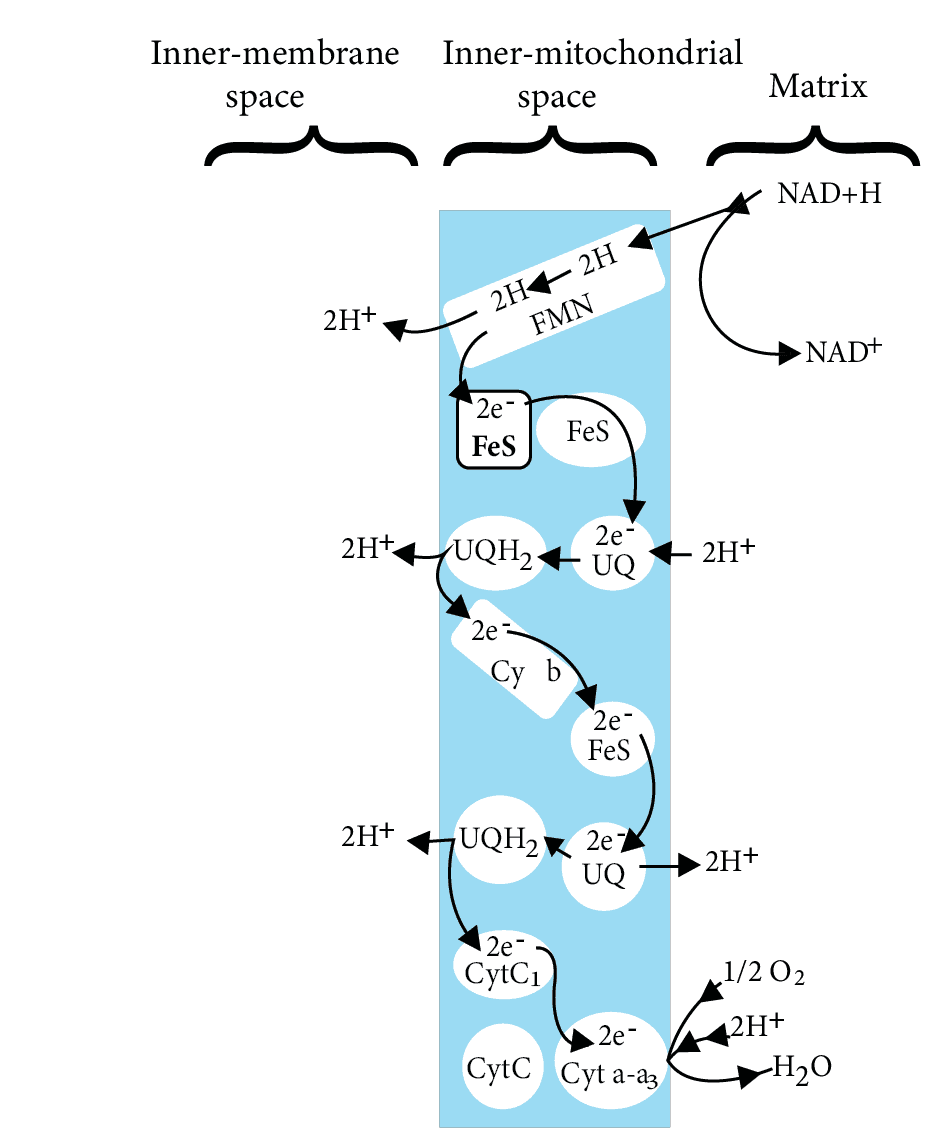
Q7: Distinguish between the following:
(a) Aerobic respiration and Anaerobic respiration
(b) Glycolysis and Fermentation
(c) Glycolysis and Citric acid Cycle
Ans:
(a) Aerobic respiration and Anaerobic respiration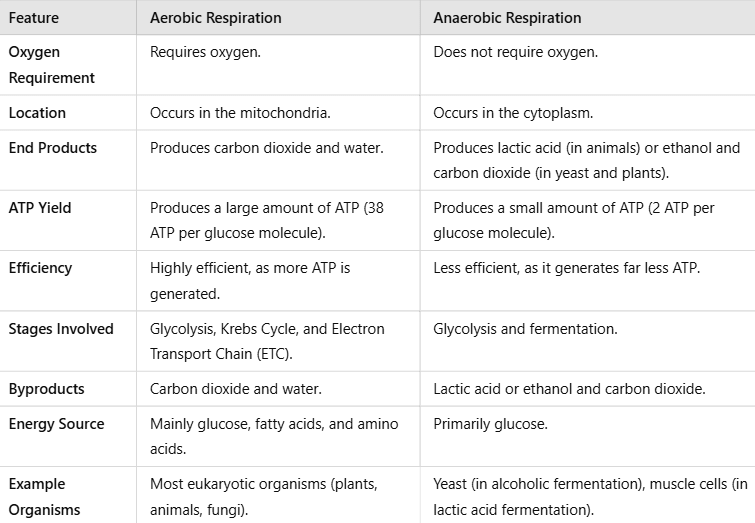
(b) Glycolysis and Fermentation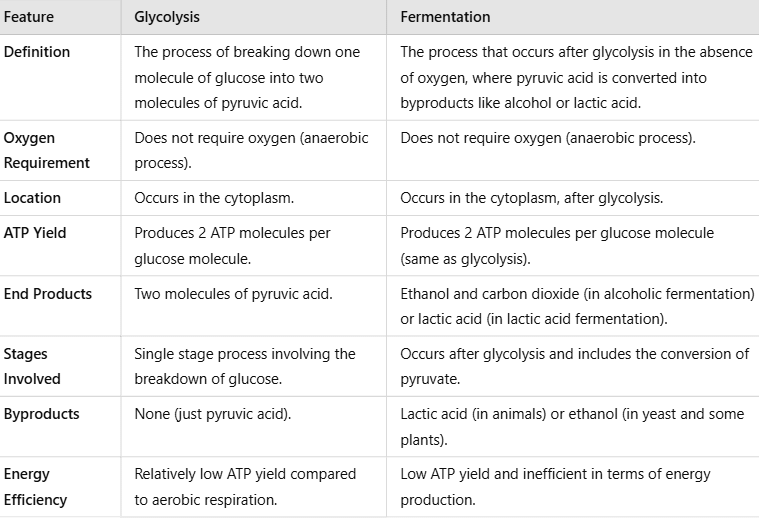 (c) Glycolysis and citric acid cycle
(c) Glycolysis and citric acid cycle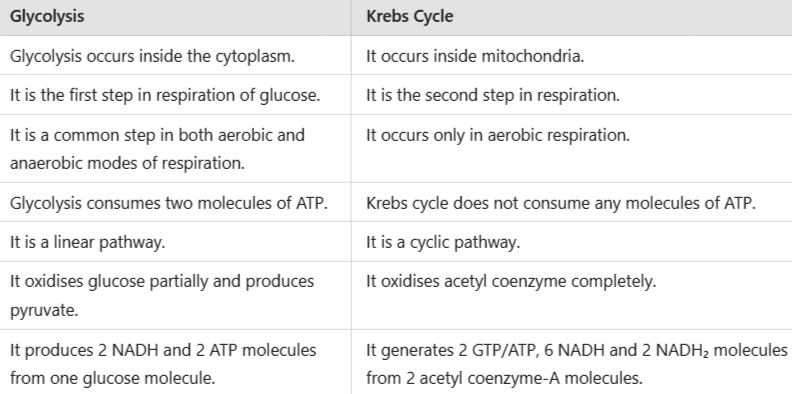
Q8: What are the assumptions made during the calculation of the net gain of ATP?
Ans: During the calculation of the net gain of ATP, several assumptions are made:
- The processes of aerobic respiration, including glycolysis, the TCA cycle, and the electron transport system (ETS), occur in a sequential and orderly manner.
- NADH produced in glycolysis is assumed to enter the mitochondria for oxidative phosphorylation.
- Only glucose is considered as the substrate, with no other molecules entering the pathway at any stage.
- The intermediates generated during respiration are not used in any other metabolic processes.
These assumptions, while useful for theoretical calculations, do not fully reflect the complexity of living systems where pathways operate simultaneously and substrates can vary.
Q9: Discuss “The respiratory pathway is an amphibolic pathway.”
Ans: The respiratory pathway is considered an amphibolic pathway because it plays a role in both the breakdown and synthesis of various biomolecules.
- Respiration is typically viewed as a catabolic process, where substances are broken down to release energy.
- Carbohydrates are converted into glucose before entering the respiratory pathway.
- Fats are broken down into fatty acids and glycerol, with fatty acids further converted into acetyl-CoA.
- Proteins are transformed into amino acids after deamination, allowing them to enter the respiratory pathway.
However, the respiratory pathway is also involved in anabolic processes:
- During the synthesis of fatty acids, acetyl-CoA is withdrawn from the respiratory pathway.
- Similarly, respiratory substrates are used in protein synthesis.
Thus, since the respiratory pathway facilitates both anabolism and catabolism, it is accurately described as an amphibolic pathway.
Q10: Define RQ. What is its value for fats?
Ans: Respiratory quotient (RQ) is the ratio of the volume of CO2 produced to the volume of O2 consumed during respiration. The value of RQ varies depending on the type of substrate used:
- For carbohydrates, the RQ is 1, as equal amounts of CO2 and O2 are exchanged.
- For fats, the RQ is always less than 1, indicating that fats require more O2 for respiration than carbohydrates.
For example, when using the fatty acid tripalmitin:
- It consumes 145 molecules of O2.
- It produces 102 molecules of CO2.
- This results in an RQ value of 0.7.
Q11: What is oxidative phosphorylation?
Ans: Oxidative phosphorylation is a vital process in cellular respiration where energy is produced in the form of ATP. This process involves several key steps:
- Electron Transfer: Electrons are transferred from electron donors, such as NADH and FADH2, to oxygen, which acts as the final electron acceptor.
- Proton Gradient Formation: The transfer of electrons is coupled with the movement of protons (H+) across the inner mitochondrial membrane, creating a proton gradient.
- ATP Synthase Role: The enzyme ATP synthase (complex V) plays a crucial role in this process. It consists of two main components:
- F1 Component: This is a peripheral membrane protein complex where ATP is synthesised from ADP and inorganic phosphate.
- F0 Component: This integral membrane protein complex forms a channel allowing protons to flow back into the mitochondrial matrix.
- ATP Production: For every two protons that pass through the F0-F1 complex, one molecule of ATP is produced.
Q12: What is the significance of step-wise release of energy in respiration?
Ans: The process of aerobic respiration is divided into four phases: glycolysis, the TCA cycle, ETS, and oxidative phosphorylation. It is generally assumed that the process of respiration and production of ATP in each phase takes place in a step-wise manner.
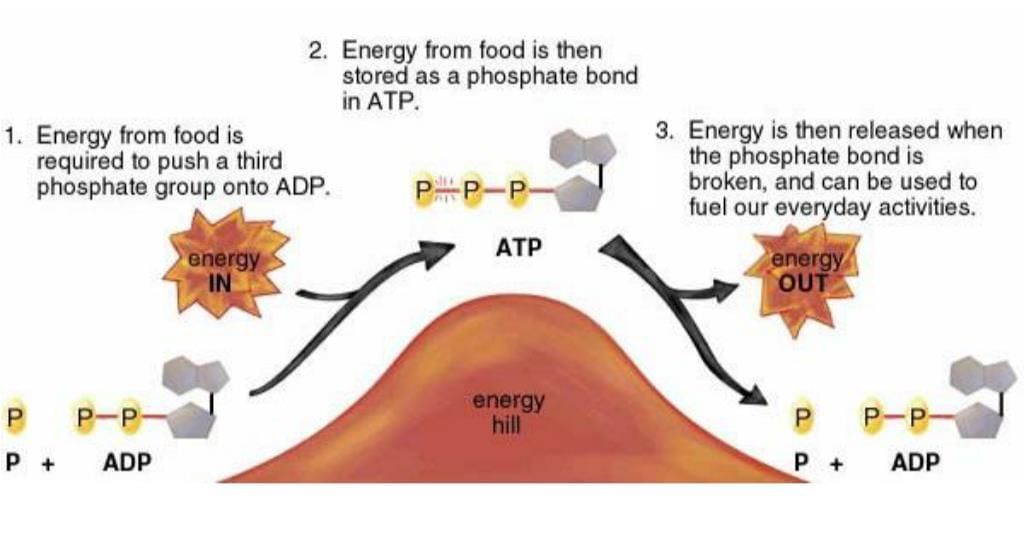
- The product of one pathway forms the substrate of the other pathway.
- Various molecules produced during respiration are involved in other biochemical processes.
- The respiratory substrates enter and withdraw from the pathway as necessary. ATP gets utilised wherever required, and enzymatic rates are generally controlled.
- Thus, the step-wise release of energy makes the system more efficient in extracting and storing energy.
|
150 videos|399 docs|136 tests
|
FAQs on NCERT Solutions Class 11 Biology Chapter 14 - Respiration in Plants
| 1. What is the process of respiration in plants? |  |
| 2. How do plants obtain oxygen for respiration? |  |
| 3. Why is respiration important for plants? |  |
| 4. How does respiration in plants differ from respiration in animals? |  |
| 5. What are the different types of respiration in plants? |  |

















